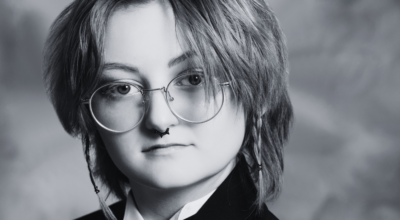It’s Friday
Published 12:43 pm Monday, September 19, 2016
Tour of cold war bunker reflects angst of that era
By Peggy Walker, R.D.
(Editor’s Note: Columnist Peggy Walker has just returned from a trip to West Virginia with her husband, Danny. For the second time during her stay at the renowned Greenbrier Hotel, she was relieved of her cell phone.)
DW and I took the famous “bunker tour” at The Greenbrier with a group of other engineers and spouses. And guess what? No cell phones allowed. Our guide was a feisty little local lady with years of information stored in her head and someone to whom you’d only say yes ma’am. She told the story of the bunker by asking questions. How do you hide a 100,000-plus square foot bunker? In plain sight, she answered herself. What is a bunker? An emergency relocation facility, as she defined it, and we were off into a world of secrecy and cold war suspense.
She didn’t just advise the group to put their phones away, she actually took them up. Hand them over. Yes, ma’am. The tour started in the lobby and up a flight of stairs right into the trade show area. Here it is, she motioned and we looked around. Since it was usable hotel space, no one ever suspected that the large room supported by 6 foot-diameter concrete columns held a secret. But the area could be sealed off by a hidden steel door and set up to provide office space for congressional aides and staff safe from radioactive fallout.
Why was the bunker built? So the operations of the United States government could continue without interruption if there was a nuclear attack on Washington, D.C., less than 250 miles away. What do you do with all the dirt removed to build a bunker? You build a golf course. How do you hide 25-ton metal doors? With faux walls covered with Dorothy Draper wallpaper to match the rest of the hotel (thankfully the mighty doors never had to be closed). And how do you disguise the outside supply entrance? You hang a sign on it that reads: “Danger: high voltage.” Works every time she said. This served as the supply entrance for 30 years.
As we moved through the bunker built between 1958 and 1961 with approval of President Eisenhower, Congress, and an agreement with Walter Tuohy, president of the Chesapeake and Ohio Railway Company and The Greenbrier Hotel, we saw the assembly room, the dormitories, the communications briefing room complete with desk phones that looked like the ones I grew up with, and on into the Dispensary and Clinic with 12 sick beds, an operating room, and dentist chair. Our leader took us through the power plant, past the water tank, into the 7,500 square foot kitchen/cafeteria, past meeting rooms, into the West tunnel entrance and decontamination area, asking questions and giving us the answers the whole time.
The bunker was kept ready for action—stocked with fresh food, water, medical supplies, office supplies, and personal necessities for 30 years and the secrecy of the location was maintained all the while. But there was always a lot of local speculation, which was passed off as only rumor.
The never-used facility was decommissioned in 1991 after the iron curtain fell in 1989 and an investigative reporter uncovered the evidence and effectively exposed it. What a story!
Our guide also confessed that she was completely taken back to learn that her next door neighbor of 30 years was actually one of the government employees who worked in the bunker. So how do you hide the small band of government workers effectively keeping the bunker hidden and operational? You dress them in Greenbrier Hotel maintenance uniforms.
Cell phones were returned at the end of the tour. They weren’t allowed because some of the area is now rented out for data storage but it did seem to heighten the sense of secrecy and cold war intrigue. I think we were all afraid that if we dared to disobey, sirens would blare, the big doors would close, and we’d all be in trouble and taken to the clink….we kind of had a feeling of suspicion that someone, somewhere was watching us…
Recipe of the Week
Corn and Broccoli Scallop
Colorful side dish to add to your repertoire of classic, comfort dishes.
2 tablespoons chopped onion
2 tablespoons butter, margarine, or canola oil
1 tablespoon all purpose flour
1 ¼ cups fat free milk
8 ounces shredded Monterey jack cheese
1 can corn, drained
½ cup crushed Ritz crackers
2 10-ounce packages frozen broccoli spears
Cook and stir onions in 1 tablespoon butter in medium saucepan on medium heat for1 minute. Blend in flour and gradually stir in milk; cook and stir 2 – 3 minutes or until thickened. Add cheese, cook and stir for 2 minutes more; stir in corn and ¼ cup cracker crumbs. Place broccoli in 12 x 8-inch baking dish; top with sauce. Melt remaining butter; mix with remaining cracker crumbs. Sprinkle over sauce. Bake 30 minutes in 350 degree oven or until thoroughly heated.





